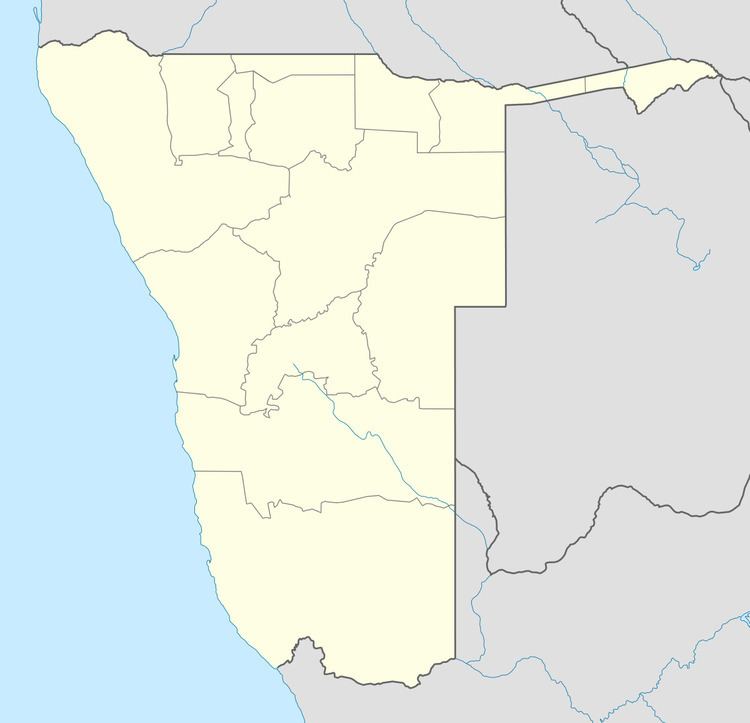Local time Wednesday 5:01 PM | Climate BWh | |
 | ||
Time zone South African Standard Time (UTC+1) Weather 31°C, Wind S at 8 km/h, 20% Humidity | ||
Leonardville is a village in Omaheke Region in eastern Namibia. It belongs to the Aminuis electoral constituency. The place normally receives an annual average rainfall of 236 millimetres (9.3 in), although in the 2010/2011 rainy season 530 millimetres (21 in) were measured.
Contents
Map of Leonardville, Namibia
Leonardville was the main settlement of the Kaiǀkhauan (Khauas Nama) subtribe of the Oorlam people until their military defeat against Imperial Germany's Schutztruppe soldiers in 1894 and 1896.
History
The area around Leonardville was inhabited by the Taa-speaking subtribe of the San people until the Khaiǁkhaun (Red Nation), who called the place Naosanabis, occupied their land. Around 1840 the group around Amraal Lambert, first Kaptein of the Kaiǀkhauan Orlam, moved into the area. They had been granted residence and pasture in the land of the Red Nation against an annual fee. In 1843 the Wesleyan Missionary Society established a missionary station here; its first missionaries were Joseph Tindall and his son Henry. They named the settlement Wesley Vale. In 1855 the Rhenish Missionary Society took over the operations. They bought the existing buildings—the church, the pastor's house, and the forge—and began to run a school for 60 to 80 children. Amraal Lambert's group, however, searched for a different place to settle. They moved to Gobabis in 1855 or 1856.
Amraal Lambert and most of his family died from smallpox in 1864. Some time after that the Kaiǀkhauan, now under the leadership of Amraal's grandson Andreas, moved back to Naosanabis. From here they controlled important trade routes. Using their technological advantage of commanding firearms and horses they were waylaying and robbing merchants. In the 1880s the Kaiǀkhauan were considered a powerful and dangerous force.
When Imperial Germany colonised the area a decade later, Lambert refused to sign a "protection treaty". Regarding the Kaiǀkhauan as a comparatively weak force by the Germans, their commander Theodor Leutwein mounted a surprise attack on Naosanabis on 6 March 1894 in order to set an example for the stronger forces in then German South-West Africa not to stand in his way.
The Schutztruppe forces won the battle and expelled the village's residents. The land was given to Angola Boers, farmers who participated in the Dorsland Trek migration movement from South Africa to Angola but decided to turn around and settle in South-West Africa. After the Herero and Namaqua Genocide 1904/05, Isaak Witbooi of the ǀKhowesin (Witbooi Orlam) moved to Naosanabis—the Kaiǀkhauan clan had at that time ceased to exist due to the devastating attack by the Germans. During South African administration the settlement was renamed to Leonardville after Dutch Reformed Church Minister Leonard.
People
Despite the encroachment of Tswana, Orlams, and Boers, there is still a considerable San population. Of the estimated 500 remaining Taa speakers in Namibia, over 50 reside in Leonardville.
Politics
Leonardville is governed by a village council that currently has five seats.
In the 2010 local election in the village, the ruling SWAPO party won 3 of 5 seats on the village's local council. RDP and NUDO each won a single seat.
Notable residents
Jan de Wet, Namibian farmer and former politician, settled in Leonardville.
